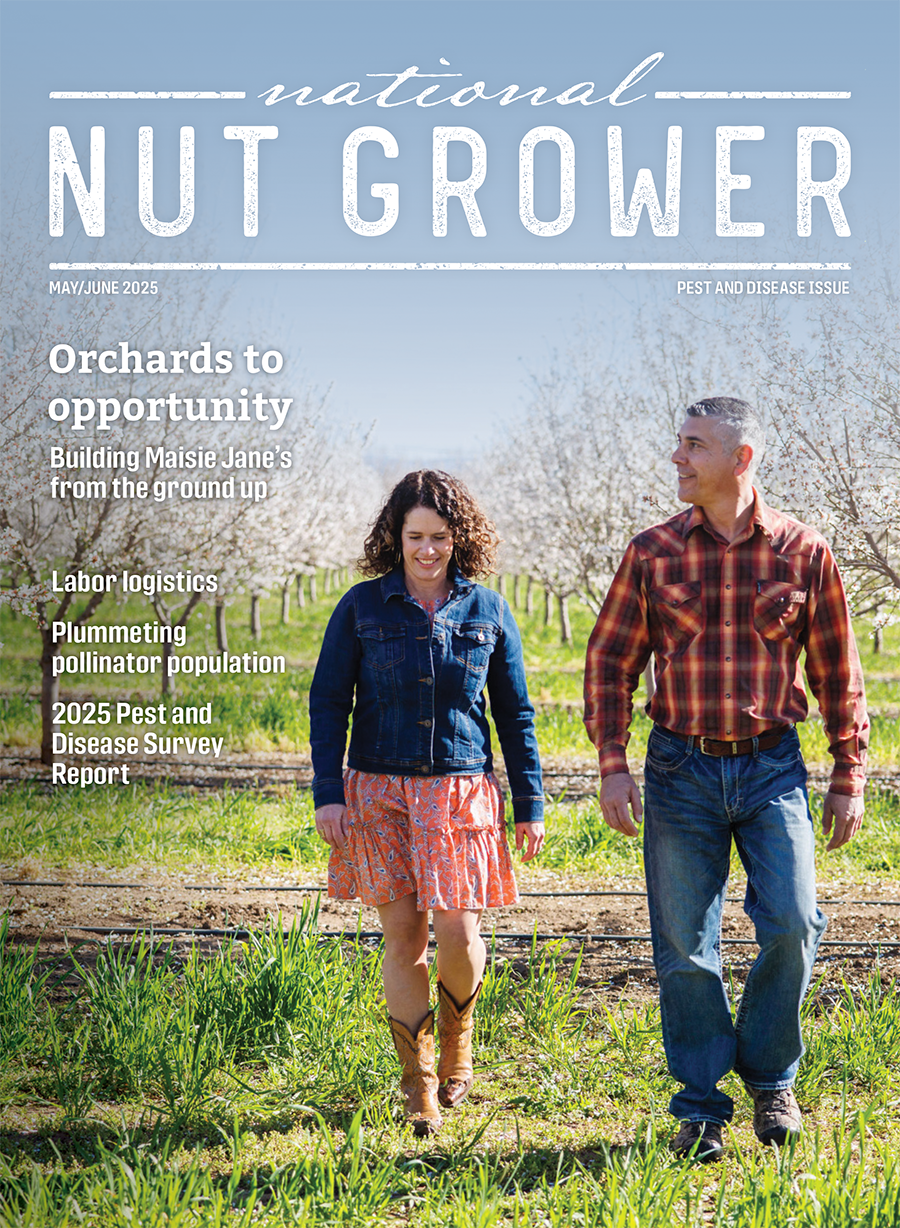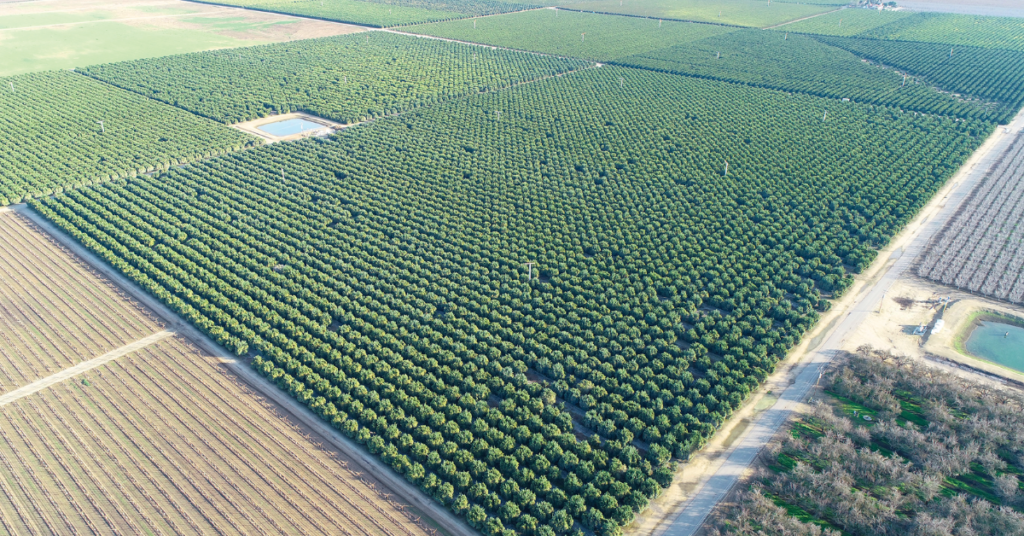
September/October 2023
Drones over orchards
Unmanned aerial systems (UAS) — drones — are becoming more popular in grower operations. The devices are gaining a foothold in nut orchards.
Drones are taking on more labor-intensive tasks as technology improves, allowing farmers to carry out traditional tasks like spraying for pests. They’ve also opened the door to new opportunities, efficiently gathering valuable data for comprehensive crop analysis and decision-making.
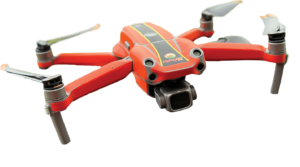
“Drones in agriculture overall have become more and more prevalent,” said Ittai Marom, general manager of Israel-based Tevel Aerobotics Technologies. “They are used for different operations, whether spraying or taking photos or fruit counting or disease detection, you name it. Drones have gained many capabilities. They can stay longer in the air and can carry more and more payloads of different kinds.”
Bullseye Farms, a Woodland, California, grower of almonds, pistachios and walnuts, uses drones to detect grove and field problems. Drones also aid automated irrigation. “One of the big things that it does is it makes us use some of the data a little more,” said Geoff Klein, irrigation manager. If images show stress during a particular time of the day, Bullseye waters those areas more at the times needed. The drones also help crews move across fields faster because of heavy soils, Kelin said.
Farmers can also use drones to make more informed decisions in pest management, crop monitoring and resource allocation, said Chad Colby, agricultural technologist consultant to FlyingAg.com and owner of ColbyAgTech.com.
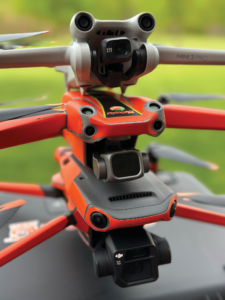
“This technology not only improves productivity and efficiency, but also contributes to sustainable agricultural practices by reducing chemical inputs and optimizing resource utilization,” Colby said. “Drones are transforming the way farmers approach crop management, enabling them to achieve higher yields, reduce costs and enhance overall farm performance.”
Hein Ranch Co., a Visalia, California, grower and farm properties manager of almonds, walnuts and pistachios, uses drones in spray platforms and for releasing beneficial insects, including pheromone releases of puffers. “We’re seeing a lot of benefits,” said Martin Hein, co-owner and a FlyingAg partner. He said FlyingAg is applying herbicide treatments to some of the company’s Midwestern program crop clients.
Drones allow growers to access marshy and other difficult areas and knock out noxious weeds. Because receiving images and reports from satellite imaging companies can sometimes entail waits of up to a week, the immediacy of drone images improves grower efficiencies, Hein said.
Agricultural technology company Hylio manufactures UAS for precision crop treatment applications.
The Houston-based Hylio helps growers apply crop treatments directly to problem areas, allowing growers to increase yields by addressing pests and deficiencies with more accuracy and efficacy, said Arthur Erickson, CEO and co founder.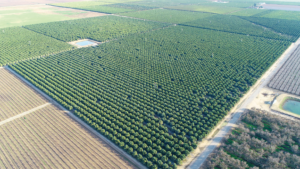
“The traditional methods for spraying are great, but if your ground is muddy, if you have an area, let’s say, like a 5- or 10-acre patch of field that has a lot of fence lines or trees going through it, it’s going to be extremely difficult, if not downright impossible, for that tractor to get out and treat your crops,” Erickson said. “It’s a binary thing. It’s either a farmer wouldn’t have even treated these 20 or 30 acres. Now he can treat those 20 or 30 acres and get good yields out of them that he otherwise couldn’t even reach with his traditional equipment.
“Drones are unlocking applications that otherwise couldn’t even have been done with the current physical tools,” he said.
**Did you know operating drones requires a license? Read Preparing for drone licensing for more information.**
Drones optimize crop scouting, which helps growers understand crop progress on a farm-wide scale, said Adityah Singh, assistant professor of agricultural and biological engineering at the University of Florida (UF). While specialized sensors may be required for identifying specific issues, basic RGB or multispectral sensors can detect signs of wilting or changes in coloration and provide information to assess and monitor overall crop development, Singh said.
“Drones can be outfitted with thermal imagers to map crop canopy temperature, providing valuable insights into water stress,” Singh said. “Well-hydrated crops typically appear cooler due to evapotranspiration, making it possible to identify areas of concern.” However, converting canopy temperatures into precise estimates of evapotranspiration or water demand is an area of UF research.
The challenge of drone imagery is how to properly evaluate the data. Analytic tools are precise and should be calibrated so a grower can fly a drone from one orchard to another or even a neighbor’s property, and not receive inconsistent data, said Ali Pourreza, assistant professor and agricultural engineering Extension specialist at the University of California, Davis.
“Data collection is one part of the challenge, but data analytics is also an important part because if we get good data, but we don’t have a good algorithm, that data is useless and maybe even misleading,” Pourreza said.
Lack of knowledge of FAA regulations, unfamiliarity with drone technology and cost concerns can impede the widespread integration of drones into agricultural practices, Colby said. “Farmers may perceive drones as expensive investments, which may lead to hesitation in integrating them into their operations,” he said.









